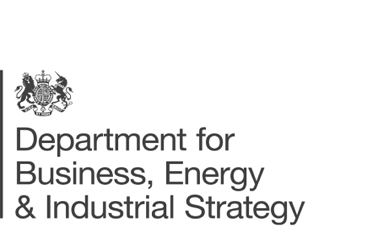One of the main activities of the EU BIM Task Group (EUBTG) is the organization of knowledge transfer workshops. The goal of the workshops is to have active round table discussions with on-site participants using the following format:
Discussion moderated workshop without long boring presentations.
20-30 participants maximum to be able to keep discussions interesting and let any participant take an active part in the debate.
Topics and agenda of the workshop can be in advance shape by registered participants.
Outcome: Knowledge and suggestion document that will be published on the EUBTG website after the workshop
The workshops are intended for public clients and policy makers. Information about upcoming workshops is communicated through the General Assembly members of EUBTG.
This capability assessment sets out the actions that government and industry will take to create opportunities for the UK construction sector by becoming a world leader in Building Information Modelling (BIM). We will build on the considerable progress already made in embedding BIM into the domestic sector.
https://www.gov.uk/government/publications/building-information-modelling
Archive taken in 2017 of the UK BIM Task Group Website.
https://webarchive.nationalarchives.gov.uk/ukgwa/20170712122310/http://www.bimtaskgroup.org/
Web pages of information related to the gradual introduction of BIM in public procurement under Ireland’s Capital Works Management Framework (CWMF) and defined in the 2023 contract reforms package supporting the National Development Plan (NDP)
From January 2024 the OGP, in conjunction with the Government Contracts Committee for Construction, will monitor the uptake of BIM across those public bodies who are required to use the CWMF. The timeline is subject to review, any changes will be based on feedback from this monitoring process.
https://constructionprocurement.gov.ie/bim/public-sector-bim-adoption-timeline/
The Build Digital Project aims to transform the Irish construction and built environment sectors by enabling all stakeholders, particularly SMEs, clients, and suppliers, to develop, maintain, and continuously improve their capabilities as digitally enabled, standards-based, agile, collaborative, and sustainable participants in the delivery of Project Ireland 2040.
This online resource is aimed at Architects and Architectural Technologists as well as clients, industry professionals and educators in this sector. The RIAI BIM Pack 2 comprises the following suite of documents: BIM Update with ISO 19650 Series BIM Guide for SMEs Appendix 1 – File Naming Standards Appendix 2 – Model Responsibility Template Appendix 3 – Master Information Delivery Plan Template
https://www.riai.ie/whats-on/news/riai-bim-pack-2-update-iso-19650-series-and-bim-guide-for-smes
As the construction industry continues to evolve and increasingly embraces digitisation, an early-stage project deliverable for Build Digital was to conduct a horizon scan of the opportunities available for those within the construction sector. A primary aim, therefore, is to provide a comprehensive inventory of educational and training provisions that exist within Ireland at present. The resulting inventory focuses on key educational sectors, including Universities, Educational Training Boards (ETBS), Colleges of Further Education, Professional bodies, and similar organisations. There are in excess of 300 entries on the inventory.
https://www.builddigitalproject.ie/education-training-inventory
This inventory was developed as a tool for identifying relevant standards and, in particular, their relevance to Build Digital. Each document found in this research was recorded, reviewed, and graded based on the scoring system created for this report and tool. This tool is intended to be flexible should new standards be published, or a change is required to an existing standard. There are in excess of 120 entries on the inventory.
https://www.builddigitalproject.ie/bim-standards-and-supports-inventory
The report presents recommendations for Build Digital with respect to information management and the use of BIM as a critical vehicle of innovation to unlock improved project outcomes in construction. The focus on addressing the information challenge is evident in the UK government’s publication of nternational information management standards in 2018 and the recent introduction of an information management mandate.
https://www.builddigitalproject.ie/international-information-management-review


